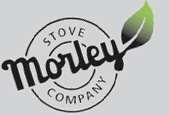
FREQUENTLY ASKED QUESTIONS
Please drop us a line or email with any questions, or come and see us in person for qualified help. Below is a list of typical questions we receive on a daily basis, these might be able to answer your questions instantly:
Q: Can I have a wood burning stove?
A: 95% of the time the answer is yes! It depends on many factors; whether there is a chimney or not (if not this does not mean you cannot have a stove!), current state of chimney, distance to neighbouring buildings etc. Please visit or call the showroom and our experienced staff can speak you through all you would need to know
Q: What size stove do I need?
A: There is a very simple calculation you can do, to work out the size of stove you need for the area you wish to heat.
Step1 – Measure the area you wish to heat i.e. your lounge. Measure in metres the width, length and height.
Step 2 – Calculate the measurements together (W x L x H) this will give you the room volume in cubic metres. (If the room is L shaped measure in sections then add together, if the room has a pitched ceiling then use the height of the room as half the height of the pitch).
Step 3 - As a guide, 1kW heating output will approximately heat 25 cubic metres of space, if the room is well insulated, 15 cubic metres if the room is of average insulation, and 10 cubic metres if the room is poorly insulated. So divide the area of the room (cubic metres) by the insulation figures above (25, 15 or 10 cubic metres) to get the heat out put required in KW
If you have worked out your heat requirement in BTU’s, to convert to kW simply multiply by 0.000293
Q: Do I need a CO Alarm?
A: The fitting of a CO (Carbon Monoxide) Alarms is now a Building Regulations requirement for a stove installation and are included in every quote we produce where we will be installing a wood stove. You can also purchase these in store at Morley Stoves in Ware, Hertfordshire.
Q: How do I light a stove?
A; There are many ways, none wrong, to light a stove but here is the simplest:
- Scrunch up used newspaper into balls and lay on the bed of your stove, lay on top of this a handful or two of seasoned kindling. Open the air vents on the stove to their maximum, and light a few pieces of the newspaper at the bottom and close the stove door(s). Once the wood has caught alight and the fire is going well inside the you can put some larger pieces of wood into the firebox. Place them gently on top of the fire. Do not fill the firebox with wood - I would recommend burning a maximum of around 3-4 large pieces of wood at a time. At this stage you can turn the air supply down a little but aim to maintain good flames whilst not letting the fire smoulder. A flue thermometer will ensure that you are running the stove at an efficient level – available in store at Morleys.
- Other ways of lighting stoves use fire lighters, we recommend Certainly Wood flamers with this method, which are made from natural wood shavings dipped in untreated wax. You can purchase these in our showroom and these can be used in place of newspaper in the lighting process.
Q: Can I link a stove to my central heating?
A: Many stoves come with a built in back boiler, or there are options on some ranges to buy a separate ‘clip on’ back boiler. These take place of internal fire bricks within the stove fire chamber, replacing them with a water jacket. The water heated in this jacket can run directly into your heating system or into you hot water cylinder. Nb. having a wood stove with an added back boiler does reduce the heat output of the stove to the room.
Q: Where do I get wood/fuel from?
A: Us! We stock all types of fuel at Morley Stoves; logs, kindling, smokeless fuel, briquettes and much more. It is very important to burn good seasoned wood. Wood bought, generally, from petrol stations and similar is not always stored or dried in the proper way. This will impact the efficiency of your stove and also produce much more smoke and tar which can damage stoves and liners, and can be very annoying when it will not burn. The moisture content of the wood will determine its suitability for burning– 28-30% is the full saturation level of wood, and it should not be burnt until the content is below 20%. We sell moisture readers in the showroom here at Morley Stoves and all our fuel will be under the 20% level and likely to be cheaper than elsewhere.
Q: Are stoves hard to use?
A: Technology is progressing in all items in the home and wood burning stoves have not been left behind. The most up-to-date stoves are as easy as to use as turning up the volume on your television. On some stoves a single control that either allows more air into the fire box to make the fuel burn harder heating the stove and room more, or downwards, restricting air into the stove to slow the burning process down.
Q: I live in a smoke controlled area; can I still have a stove?
A: The quick and easy answer is yes, as long as the stove is Defra approved; Department for Environment Food and Rural Affairs. The Clean Air Act states that, in Smoke Control Areas, "Only approved smokeless fuel may be burned". Wood is not an approved smokeless fuel and the only way that wood can be burned legally in a smokeless zone is if the wood burning stove used is approved by Defra. We have many Defra approved stoves available and on display in our showroom.
Q: How do I clean my stove?
A: We have all the cleaning products you could possibly need to make your stove look as good as new, from grate cleaner to glass cleaner; please call or visit our showroom.
Q: How often should I have my chimney swept?
A: Chimneys need to allow free passage of dangerous combustion gasses. Regular cleaning will remove soot and creosote, helping prevent dangerous chimney fires. Cleaning will increase the efficiency of some appliances. Bird nests, cobwebs and other blockages will be removed. Frequency will depend on a number of factors including: Type of fuel, appliance used, duration of use, moisture content of wood fuel, type of chimney, but we would advise for chimneys to be swept once a year in general.
Q: My glass has cracked on my stove; can you come and fix it?
A: “Do it yourself!” We supply all sizes of glass for almost all stoves. If you can provide the name and size of the stove we may have a piece in stock or can definitely get a piece in for you. Generally it is easy to replace glass by just removing a few screws, do not over tighten as you need to allow for expansion and retraction whilst in use. The glass needs to be special heat resistant glass, this is different from oven glass.


